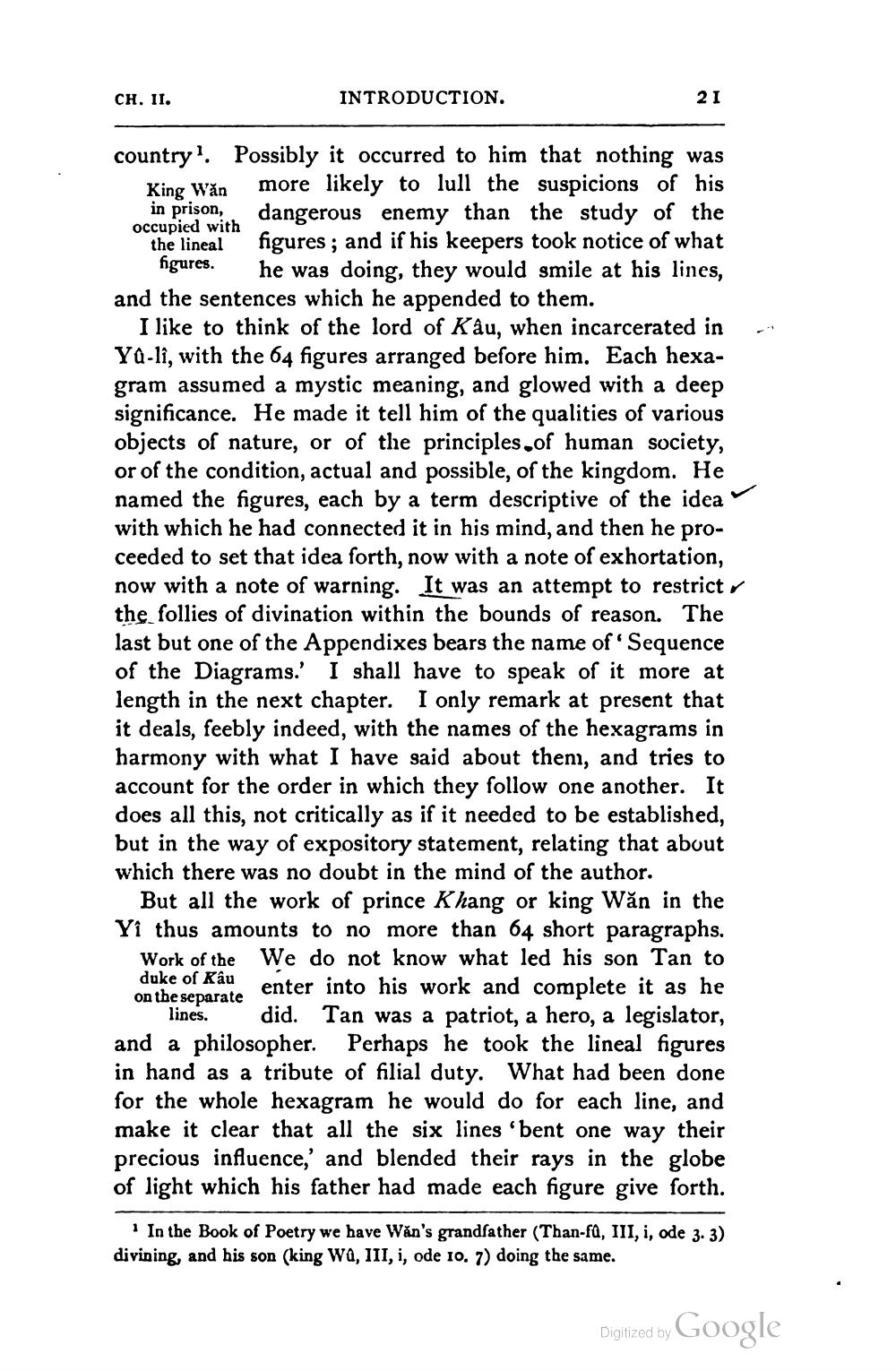________________
CH. II.
INTRODUCTION.
21
country'. Possibly it occurred to him that nothing was
King Wăn more likely to lull the suspicions of his
in prison, dangerous enemy than the study of the occupied with the lineal figures; and if his keepers took notice of what
figures. he was doing, they would smile at his lines, and the sentences which he appended to them.
I like to think of the lord of Kâu, when incarcerated in Ya-lî, with the 64 figures arranged before him. Each hexagram assumed a mystic meaning, and glowed with a deep significance. He made it tell him of the qualities of various objects of nature, or of the principles of human society, or of the condition, actual and possible, of the kingdom. He named the figures, each by a term descriptive of the idea with which he had connected it in his mind, and then he proceeded to set that idea forth, now with a note of exhortation, now with a note of warning. It was an attempt to restrict the follies of divination within the bounds of reason. The last but one of the Appendixes bears the name of Sequence of the Diagrams.' I shall have to speak of it more at length in the next chapter. I only remark at present that it deals, feebly indeed, with the names of the hexagrams in harmony with what I have said about them, and tries to account for the order in which they follow one another. It does all this, not critically as if it needed to be established, but in the way of expository statement, relating that about which there was no doubt in the mind of the author.
But all the work of prince Khang or king Wăn in the Yỉ thus amounts to no more than 64 short paragraphs.
Work of the We do not know what led his son Tan to duke of Kâu. enter into his work and complete it as he on the separate
lines. did. Tan was a patriot, a hero, a legislator, and a philosopher. Perhaps he took the lineal figures in hand as a tribute of filial duty. What had been done for the whole hexagram he would do for each line, and make it clear that all the six lines 'bent one way their precious influence,' and blended their rays in the globe of light which his father had made each figure give forth.
* In the Book of Poetry we have Wăn's grandfather (Than-ra, III, i, ode 3. 3) divining, and his son (king Wa, 111, i, ode 10. 7) doing the same.
Digitized by Google




